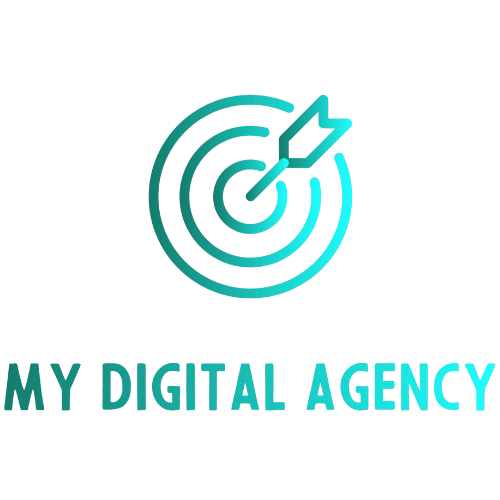Deciding how much to invest in a website is a common challenge for small businesses. A well-crafted online presence can drive leads, build trust, and support growth, but overspending can strain cash flow. This guide helps you think through website design for a small business in practical terms, with a realistic budgeting approach that aligns with goals, industry, and customer expectations.
Why a website is worth the investment
Your website is often the first impression customers have of your brand. It serves multiple roles: as a storefront, an information hub, a customer service channel, and occasionally as a sales platform. For many small businesses, a strong online foundation lowers marketing costs over time and provides a measurable return on investment. When you plan with your objectives in mind, you can prioritise features that deliver the most value.
- Credibility: A professional website signals legitimacy and trust.
- Accessibility: People search for services and products online; a good site makes it easy to find what they need.
- Accountability: Analytics show how visitors engage, guiding improvements.
- Growth potential: A scalable site supports expansion, new products, or services.
Factors that influence website design for small business budgets
Setting a realistic budget starts with understanding what goes into a website and what choices affect price. Consider these factors:
- Scope and goals: Do you need a simple brochure site, an e-commerce store, or a lead-generating platform? The more pages and functionality, the higher the cost.
- Design quality: Custom, high-end design typically costs more than a template-based approach. However, a clean, modern design tailored to your brand pays off in conversions.
- Content creation: Writing copy, photography, and video can add to the cost, but it improves engagement and SEO.
- Development approach: DIY builders, templatized CMS, or fully bespoke development, each has different price points.
- SEO and performance: Basic on-page SEO is essential; advanced SEO, speed optimisation, and technical performance add to the budget.
- Maintenance and hosting: Ongoing costs include hosting, security, updates, and occasional redesigns.
- Accessibility and compliance: Meeting accessibility standards and privacy regulations can affect both time and cost.
- Marketing integration: Connecting the site with email marketing, CRM, or analytics platforms can influence the total spend.
Different budget ranges and what you typically get
While every project is unique, you can estimate typical ranges to guide decision-making. These figures are indicative and based on common market prices in the UK for small business website design.
- Low-budget (£0–£1,000): A basic, static site built on a free or low-cost platform with limited pages and minimal customisation. Good for startups testing a concept, but limited in functionality and polish.
- Mid-range (£1,000–£5,000): A professional presence with a responsive design, a content management system, a handful of pages, and basic features like contact forms and hosting. This range often includes some copywriting and basic SEO.
- Standard professional (£5,000–£10,000): A polished, scalable site with customised design, multiple templates, robust CMS, enhanced SEO, performance optimisations, and standard integrations (e.g., CRM, email marketing). Suitable for most small to mid-sized businesses.
- Premium (£10,000+): Bespoke design, advanced features (e-commerce, booking systems, multilingual support), extensive content creation, advanced analytics, ongoing optimisation, and a strategic digital marketing plan.
Prioritising features to get the best value
If the budget is limited, prioritise features that deliver the most impact for your goals. Common priorities include:
- Clear value proposition and strong branding on the homepage
- Responsive design that works on mobile and desktop
- Lead capture mechanisms (contact forms, call-to-action buttons, chat)
- SEO-friendly structure and fast page load times
- Easy-to-update content with a user-friendly CMS
- Security measures (SSL, regular updates)
- Accessibility basics (alt text, semantic HTML, keyboard navigation)
Cost-saving tips without compromising quality
- Start with a clear brief: Define goals, audience, and must-have features to avoid scope creep.
- Use a reliable CMS with a templated design: Many platforms offer professional templates that can be customised.
- Choose a competent, local provider: They understand the local market and compliance requirements.
- Plan content in advance: Prepare copy and imagery to reduce back-and-forth during development.
- Favour scalable solutions: Ensure the site can grow with your business, rather than building for today only.
- Combine hosting and maintenance: Some providers offer bundled packages for ongoing support.
How to calculate your own budget
- List your must-have features (e.g., contact form, product pages, blog, SEO basics).
- Estimate monthly or annual hosting, security, and maintenance costs.
- Add design and development costs based on the scope you’ve defined.
- Include content creation costs if you need copywriting or photography.
- Add a contingency (10–20%) for unexpected needs or changes.
- Compare quotes from a few reputable web design specialists for small businesses to ensure a fair price.
Measuring success and ROI
Investing in website design for a small business should tie to measurable outcomes. Track:
- Lead generation metrics: form submissions, phone calls, or emails attributed to the site
- Conversion rates: percentage of visitors who complete a desired action
- Traffic quality: bounce rate, time on site, and returning visitors
- SEO performance: keyword rankings, organic traffic, and click-through rate
- Customer acquisition cost affected by the website
- Revenue growth tied to online channels
Regular reviews help you adjust features, content, and marketing spend to improve ROI over time.
Final thoughts
Balancing cost with value is the key when determining how much to spend on a website. For most small businesses, a well-executed website design for small business in the mid-range bracket (£5,000–£10,000) often provides the best balance between quality, scalability, and return on investment. However, your exact budget should reflect your goals, audience, and growth plans. By outlining needs, reserving budget for content and SEO, and choosing a capable partner, you can build a site that supports your business now and into the future.
